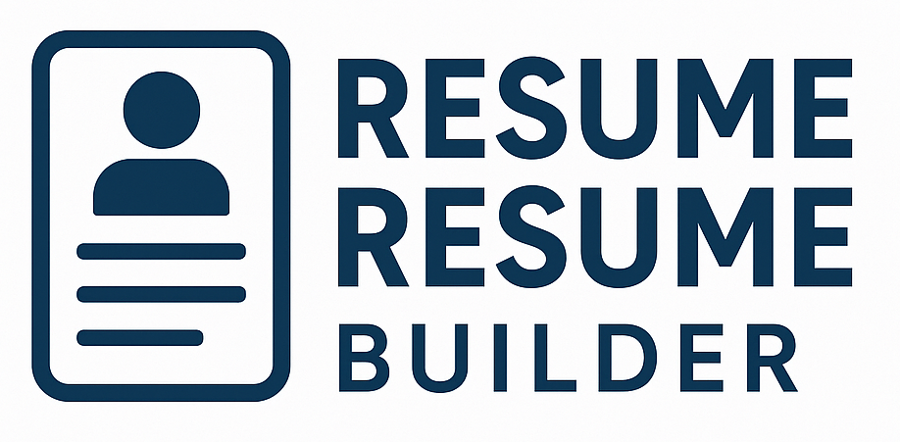5 Hidden Mistakes Your Resume Builder Template Might Be Causing (and How to Fix Them)
October 25, 2025 at 4:42 pm
Resume builders have made it easier than ever to create polished, professional-looking resumes in minutes. With just a few clicks, anyone can generate a layout that looks impressive and well-organized. However, behind these sleek designs, there can be hidden pitfalls that hurt your chances of landing an interview. Even the best-looking resume template can fail if it doesn’t communicate your skills effectively or isn’t compatible with applicant tracking systems (ATS). Below are five common mistakes caused by resume builder templates — and how to fix them before they cost you your next big opportunity.
1. Your Resume Isn’t ATS-Friendly
One of the biggest hidden dangers of resume builder templates is that many of them are not optimized for Applicant Tracking Systems (ATS). These systems scan resumes to identify keywords and organize candidate data before a recruiter even looks at them. If your resume contains text boxes, columns, or images, the ATS may not read the content correctly. As a result, crucial information such as your job titles, skills, or contact details might not appear in the system at all.
How to fix it: Choose a template that uses simple formatting with clear sections and minimal design elements. Avoid embedding key information inside shapes or graphics. When in doubt, test your resume by converting it to plain text — if the text appears in the correct order and remains readable, it’s likely ATS-compatible.
2. You’re Using the Same Template for Every Job Application
Resume builders make it tempting to create one “perfect” resume and use it everywhere. Unfortunately, employers can easily spot a generic application. A single, all-purpose template often fails to highlight the specific skills and experience that matter most for each job. Recruiters want to see alignment between your resume and their job posting — not a one-size-fits-all approach.
How to fix it: Create multiple versions of your resume tailored for different job categories or industries. Use your resume builder’s customization tools to adjust your professional summary, keywords, and bullet points to match each role. A well-targeted resume signals genuine interest and effort, increasing your chances of moving forward in the hiring process.
3. The Template’s Design Is Overshadowing Your Content
A sleek, creative template can make your resume stand out — but sometimes, the design becomes a distraction. Excessive color schemes, icons, or complex layouts can draw attention away from your achievements and make the document harder to read. In certain industries, such as finance, law, or government, overly decorative templates can even appear unprofessional.
How to fix it: Focus on clarity and readability first. Choose a clean, minimal design with consistent spacing and font size. Use subtle design accents — not flashy ones — to guide the reader’s attention to key sections like your experience and skills. Remember, recruiters spend only a few seconds scanning a resume, so your content should always be the main focus.
4. You’re Leaving Generic Text in the Template
Many resume builders come with pre-filled sections or placeholder text such as “Insert your achievement here” or “Describe your leadership skills.” Some job seekers forget to replace all of these prompts, leaving unedited template text in their final document. Even small oversights like this can make your application appear rushed or careless.
How to fix it: Review your final resume line by line before submitting. Replace all placeholder language with your own original content. Focus on strong, action-oriented statements that describe your real achievements, such as “Led a marketing campaign that increased social media engagement by 45%” or “Implemented a new workflow system that improved team productivity.” These concrete examples demonstrate initiative and credibility.
5. The Template Doesn’t Reflect Your Personal Brand
Your resume isn’t just a summary of your experience — it’s also a representation of your professional identity. Many job seekers select a random template without considering how it aligns with their personal brand or the expectations of their target industry. For instance, a bold, colorful layout might suit a graphic designer but feel out of place for an engineer or accountant. A mismatched design can create a subtle disconnect between your visual presentation and your professional story.
How to fix it: Choose a template that reflects both your career field and your personality. If you’re in a creative industry, a visually engaging format may help showcase your flair for design. For more traditional roles, a simple and structured layout communicates professionalism and reliability. The goal is to ensure your resume visually supports — not contradicts — the message you want to send.
Resume builders are powerful tools that can save time and simplify the job application process. But they are not foolproof. A beautiful design won’t help if the template hides essential information, fails to pass through ATS software, or doesn’t reflect who you are as a professional. By understanding and fixing these hidden mistakes, you can turn your template into a strategic advantage. Make sure your resume combines style with substance, personalization with clarity, and creativity with professionalism. When used correctly, a resume builder can help you create not just a good-looking document — but one that truly gets results.
